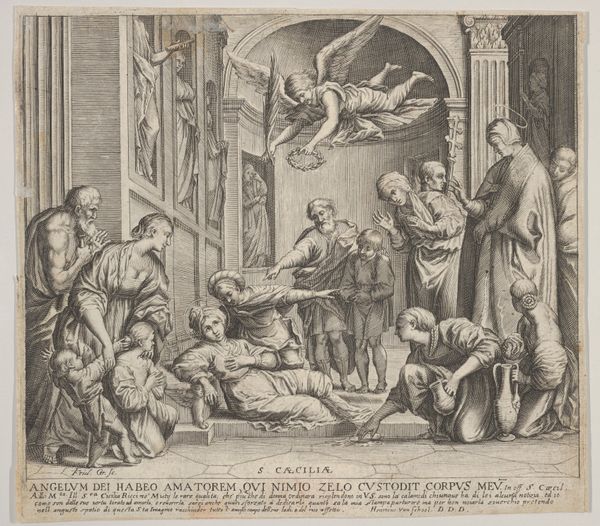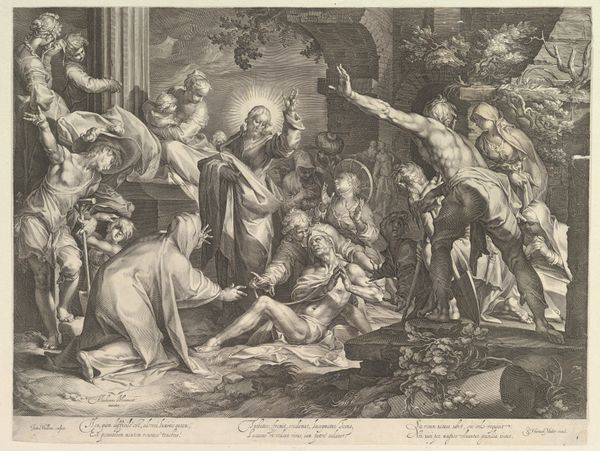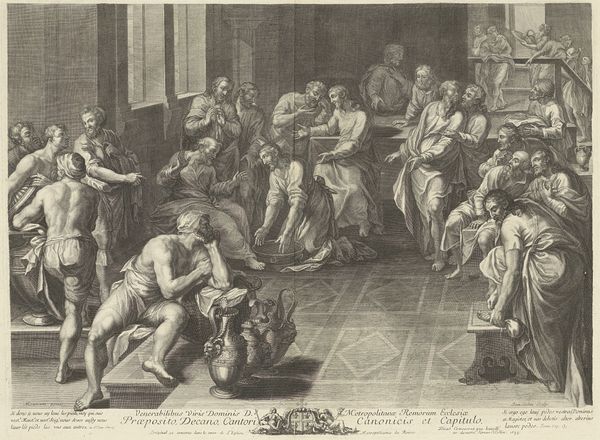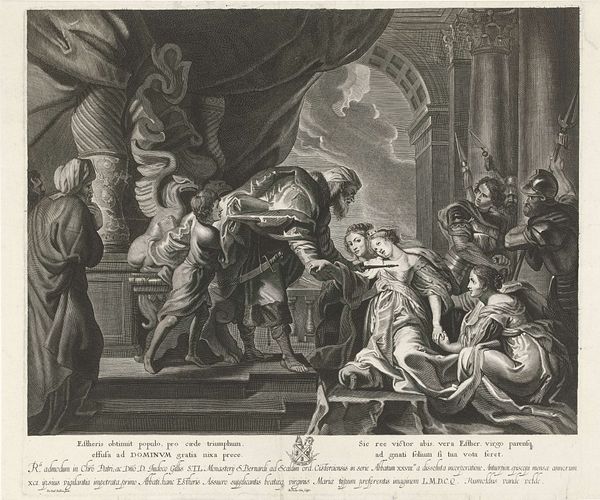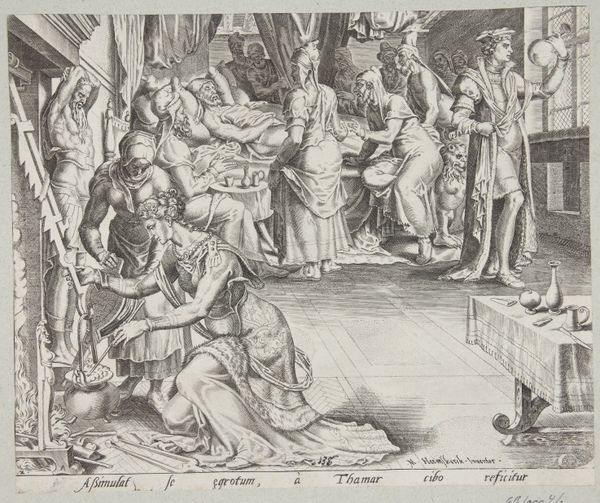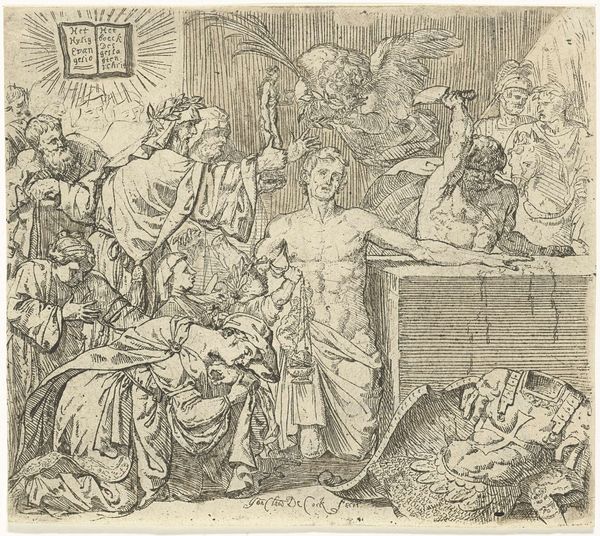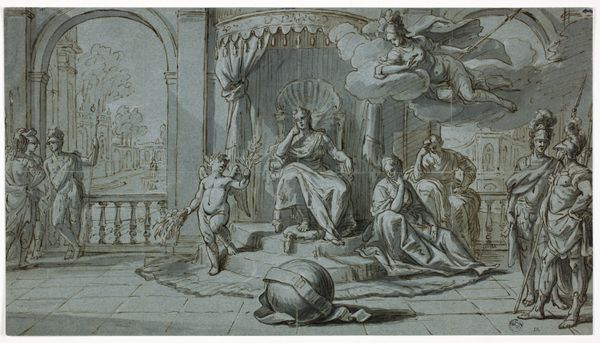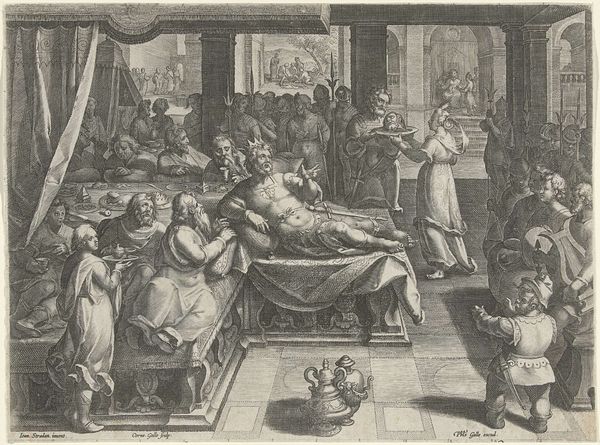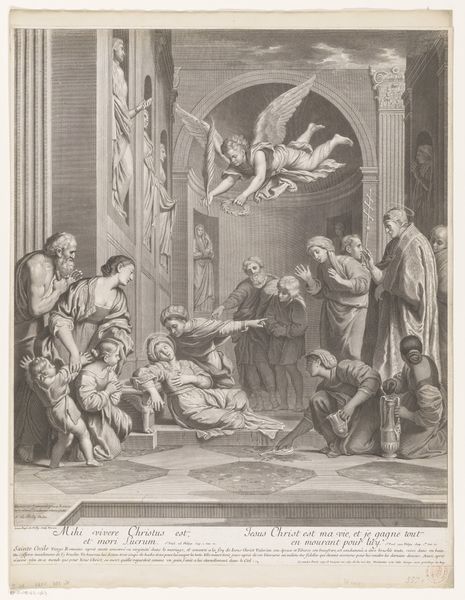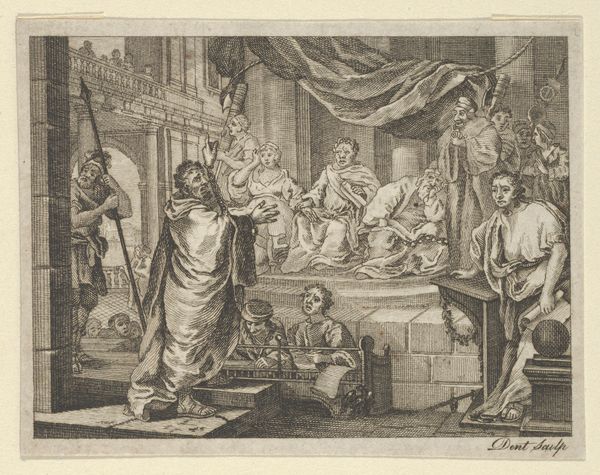
The suicide of the philosopher Cato, who lies on his bed pulling out his innards watched by horrified disciples 1600 - 1650
0:00
0:00
drawing, print, etching
#
drawing
#
allegory
#
baroque
# print
#
etching
#
figuration
#
history-painting
Dimensions: sheet: 11 1/16 x 16 3/16 in. (28.1 x 41.1 cm)
Copyright: Public Domain
Pietro Testa made this etching of the suicide of Cato, the ancient Roman philosopher, in the 1640s, a time of renewed interest in classical stoicism. Cato chose death rather than submit to tyranny. The image creates meaning by drawing on the visual codes of martyrdom and sacrifice. The horrified disciples around Cato’s bed are part of a long tradition of representing virtuous deaths as a public drama with important implications for the future of the state. The busts of Roman leaders in the background also situate Cato’s death within a specific tradition of Roman Republicanism. The image speaks to the political and intellectual debates of 17th-century Europe. Then, as now, the question of when resistance to authority is legitimate was a pressing concern. To understand this etching better, we might consult contemporary political pamphlets and philosophical treatises. Art provides a window into the complex negotiations between individual action, social norms, and institutional power.
Comments
No comments
Be the first to comment and join the conversation on the ultimate creative platform.


